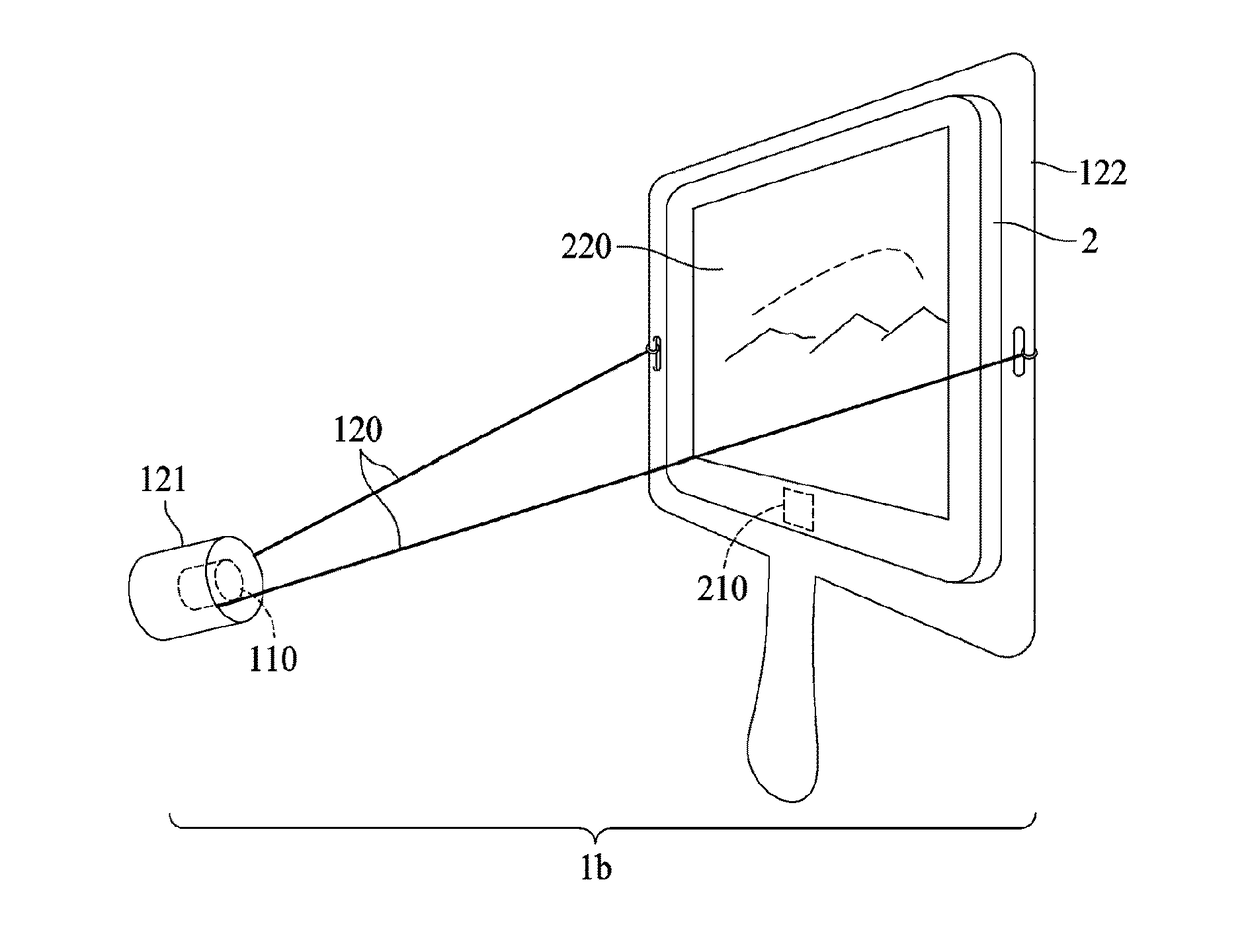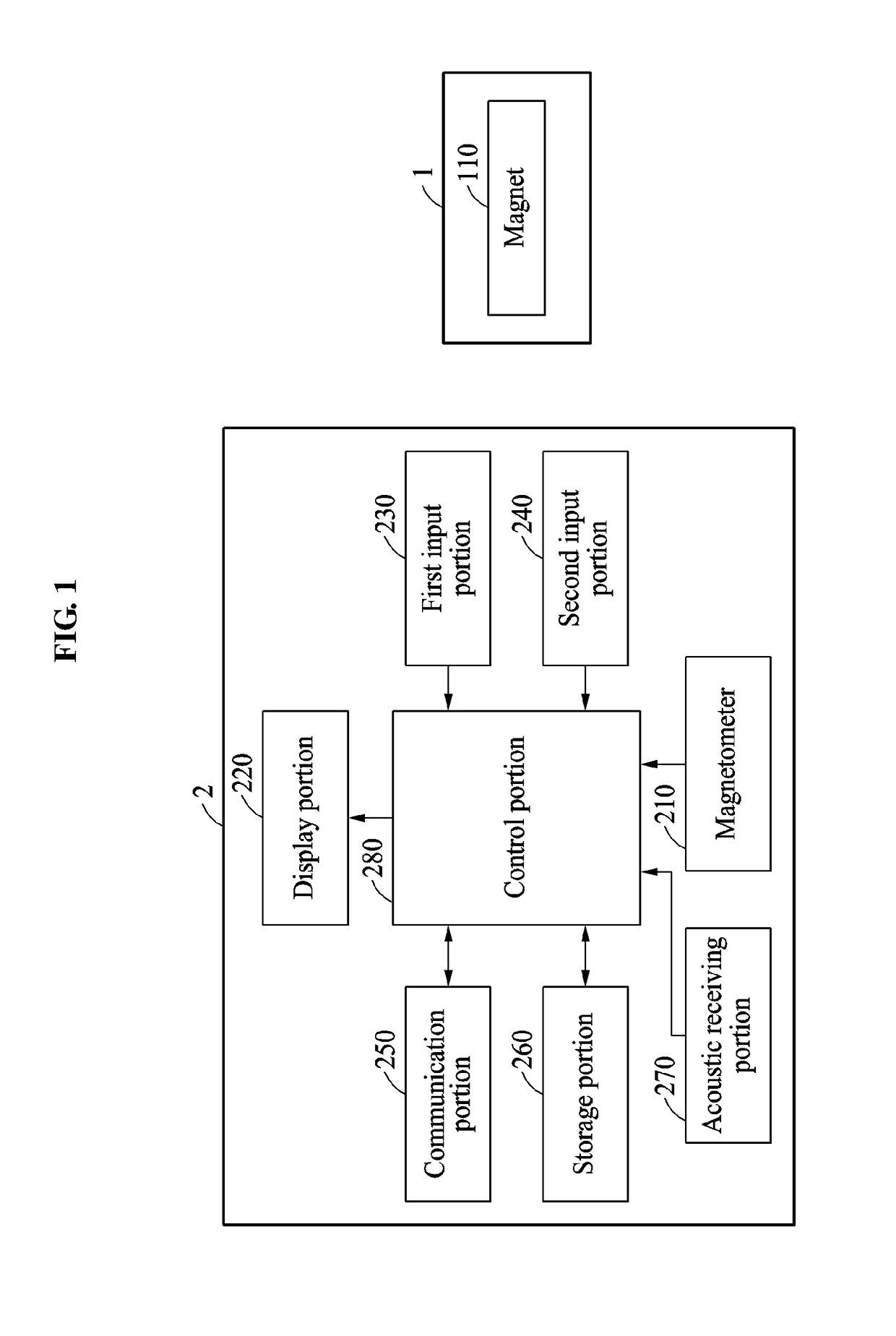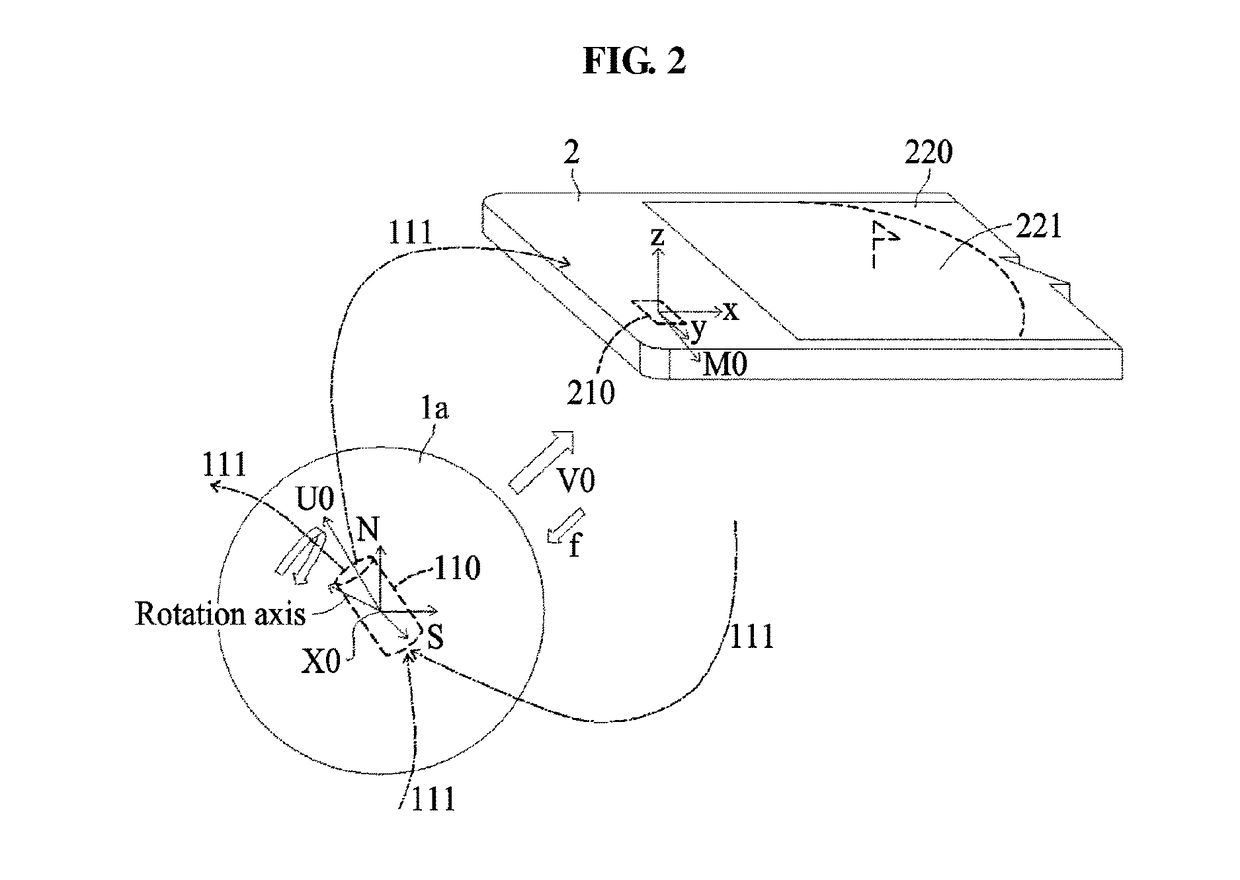Input device for transmitting user input
a technology for input devices and user inputs, applied in the direction of instruments, computing, electric digital data processing, etc., can solve the problems of not being able to adjust the stroke of the pen, not being able to measure the applied pressure, and not being able to derive an intuitive and easy operation from the 2d operation using, so as to facilitate the operation of geospatial applications
- Summary
- Abstract
- Description
- Claims
- Application Information
AI Technical Summary
Benefits of technology
Problems solved by technology
Method used
Image
Examples
Embodiment Construction
[0069]The following will now describe the present disclosure in more detail, with reference to the accompanying drawings and example embodiments.
[0070]FIG. 1 is a diagram illustrating a user input system including an electrical device and a movable object including a magnet according to an example embodiment.
[0071]As shown, the user input system includes a movable object 1 including a magnet 110, and an electrical device 2 for sensing and processing a magnetic field from the magnet 110.
[0072]The object 1 includes a body including the magnet 110 inside or outside the body. The object 1 may be embodied in various forms, including, for example, a mouse, a bullet, a touch pen, a ring, a dice, and the like.
[0073]The electrical device 2 may be embodied in a mobile communication terminal or a computer, and includes a magnetometer 210 for sensing a magnetic field or a change in the magnetic field, a display portion 220 for displaying screens or information of various programs, a first input...
PUM
 Login to View More
Login to View More Abstract
Description
Claims
Application Information
 Login to View More
Login to View More - R&D
- Intellectual Property
- Life Sciences
- Materials
- Tech Scout
- Unparalleled Data Quality
- Higher Quality Content
- 60% Fewer Hallucinations
Browse by: Latest US Patents, China's latest patents, Technical Efficacy Thesaurus, Application Domain, Technology Topic, Popular Technical Reports.
© 2025 PatSnap. All rights reserved.Legal|Privacy policy|Modern Slavery Act Transparency Statement|Sitemap|About US| Contact US: help@patsnap.com



